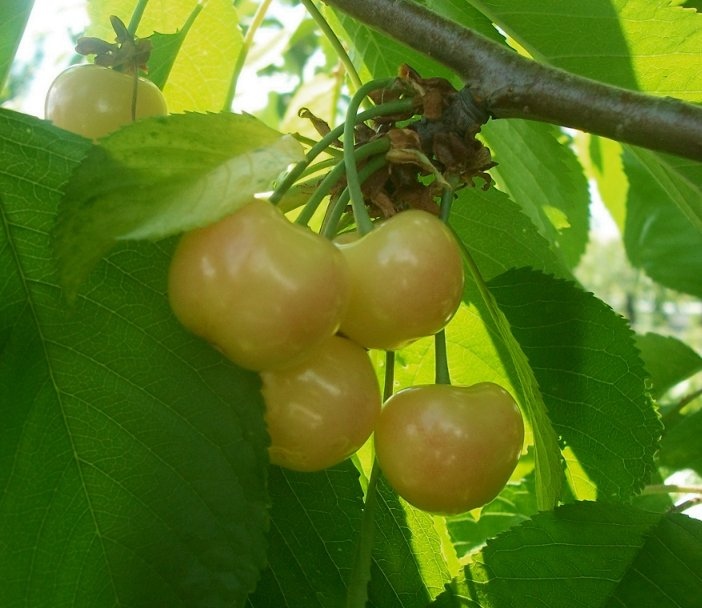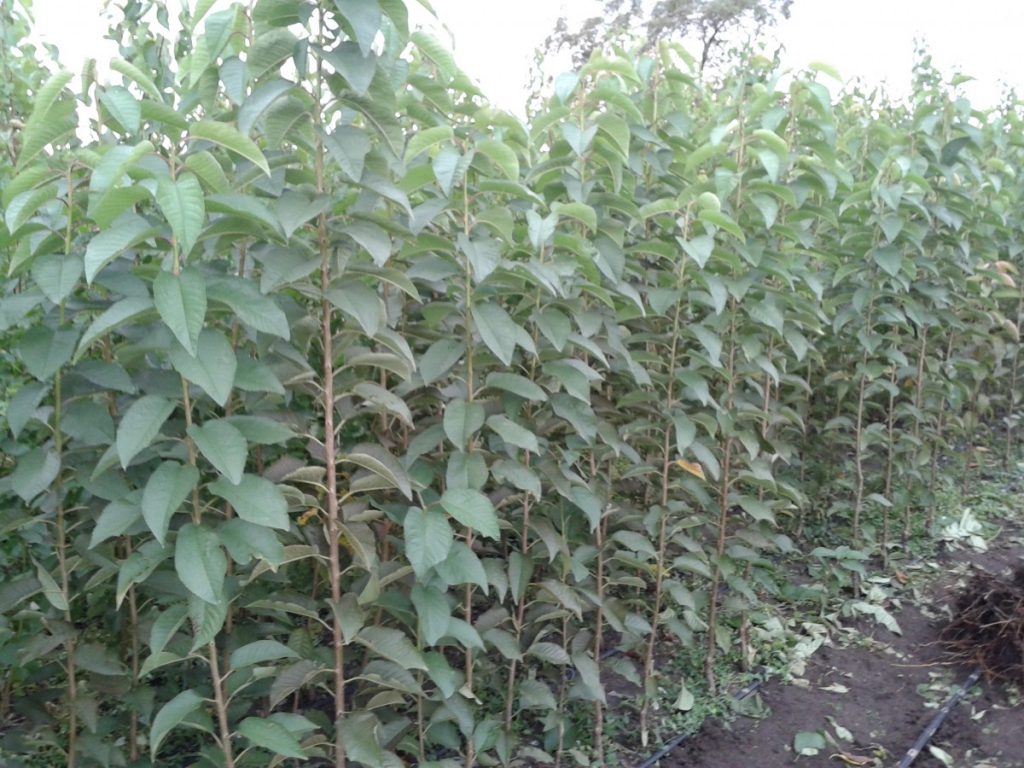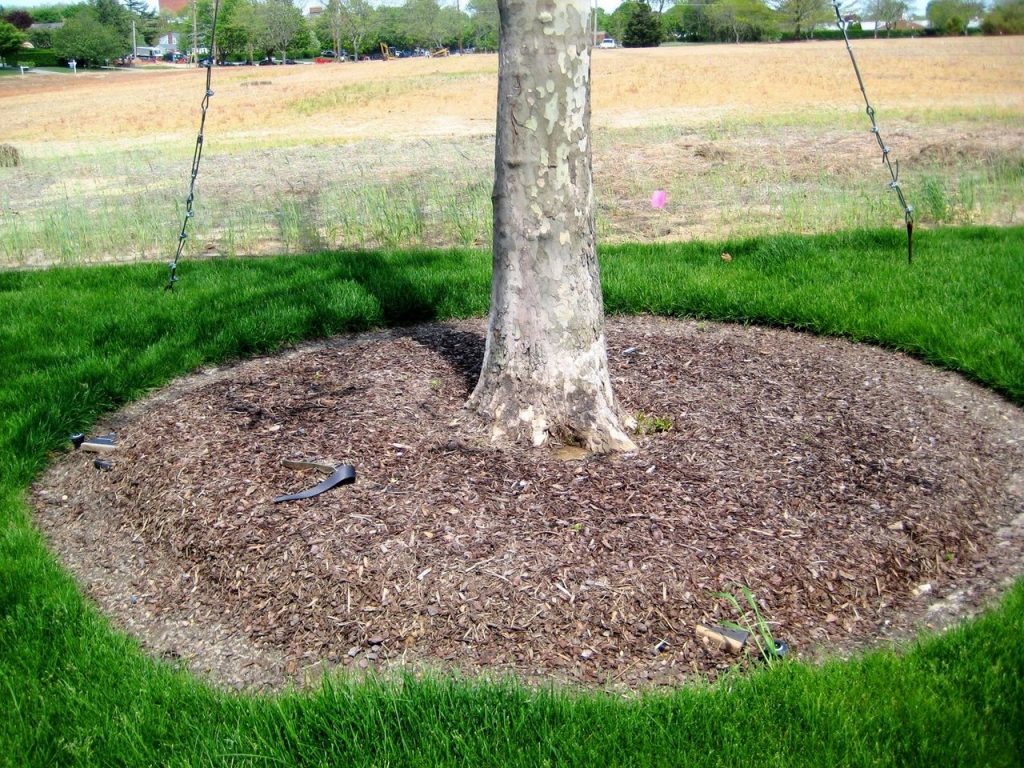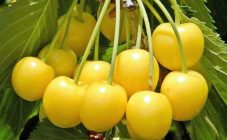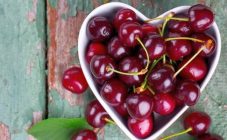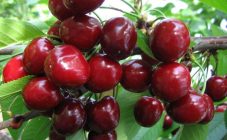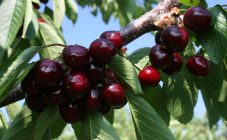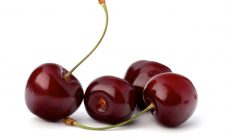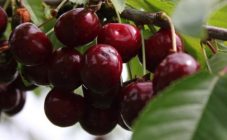Content:
Sweet cherry is one of the earliest ripe stone fruit trees, large and sweet fruits ripen (depending on the variety) from the last decade of June to the second decade of July.
Due to the early ripening period, various varieties of sweet cherries can be found on many household plots. Sweet cherry Yantarnaya is popular with summer residents because of the color of ripe berries - rich yellow, similar to pieces of amber (for which it got its name). You can learn about other positive qualities of this stone fruit tree, its characteristics, cultivation agrotechnology from this article.
General information about culture
At the end of the last century, Ukrainian breeders set out to create a fruitful sweet cherry variety with yellow large fruits. To do this, they crossed the varieties Gaucher black and Drogana yellow. Work on the development of a new variety was carried out at the N.N. Grishko. The date of creation of the variety is considered to be 2001. In Russia, breeders decided to improve this variety, zoning it for growing in different regions of our country. As a result, a variety of sweet cherries, Orlovskaya amber, was obtained, it was entered in the State Register, and it was created at the Research Institute of Breeding of Fruit Crops.
Characteristics and description of the variety of sweet cherry Orlovskaya amber
The crown of this stone fruit tree is dense and spreading, its size is slightly larger than average. The shape of the crown is wide-pyramidal, slightly raised upward. Thickness is medium. The branches are slightly drooping. The main shoots are of medium length, straight, yellow in color, not pubescent. The bark near the central trunk and lateral branches is gray, smooth. The foliage of this culture is oval, light emerald in color. The petiole is short, not more than 5 cm long, of small thickness. The ovaries are formed mainly on special branches called bouquet branches.
The flowers are of medium size, usually five-petal, white in color.
The color of ripe berries is amber, but often the skin can have a pinkish tint. Their size is slightly more than average, the weight of one fruit can reach 5-6 g. The berries are heart-shaped with a slightly pointed tip, and slightly rounded at the point of attachment to the petiole. Up to 35 kg of ripe berries can be harvested from one tree, which is considered a fairly high yield. And the first fruits ripen on young trees already for 4 seasons after planting in a permanent place.
The skin and flesh are of an intense amber shade. The pulp is sweet, without sourness, has a pleasant smell, the density is medium, juicy, and the juice is light, transparent. The seed has an elliptical shape, small, well separated from the pulp in ripe berries. The percentage of sugars in ripe fruits is up to 10%, and acids are less than 0.5%.
Frost resistance characteristic: this cherry variety is highly resistant to frost, therefore it can be grown in many regions with short summers and cold winters.
Another positive quality of the yellow cherry is that its fruits are not pecked by birds, because they have an unusual color of the fruit.
This cherry is well tolerated by changing weather, and the fruits ripen well in hot dry season and in rains, and their skin is not prone to cracking.
Agrotechnics
When planting this variety, it should be remembered: Orlovskaya yellow is self-fertile, cherries of other varieties are planted nearby (Vityaz, Iput, Gostinets, Severnaya, Ovstuzhenka). The main advantage of these varieties is that they bloom simultaneously with Orlovskaya yellow.
It is better to plant cherries in the spring, before the buds swell. If you have to plant trees in the fall, it is better to do this before the end of September, so that the seedlings have time to take root before the onset of cold weather.
Before planting, you should choose a place for the seedling. The plot should be well lit by sunlight, but this variety grows well and bears fruit in light partial shade. If several young trees are planned to be planted nearby, planting holes for them are dug at a distance of at least 4 m from each other. Closely planted cherries will interfere with each other, they grow and develop worse.
The soil on the site should be loose and fertile. If the soil is heavy and clayey, during the autumn digging, coarse river sand is introduced into it, a layer of rotted manure is placed on the bottom of the prepared planting holes.
You should also prepare a nutrient substrate, which will fill the planting pit. It should contain the following ingredients:
- garden land - 20 kg;
- ammonium sulfate - 1.5 kg;
- superphosphate - 1 kg;
- potassium salts - 1 l;
- wood ash - 1 kg;
- fresh manure (or humus) - 30 kg.
Before planting, they dig up the soil, then dig a hole with a diameter of 0.75 m, a depth of 0.9 m. A stake is driven into the center, the hole is half filled with the prepared substrate. A sapling is installed on it, tied to a stake, the roots are carefully straightened along the diameter of the hole and covered with soil from above. Up to 30 liters of water is poured under each tree, the soil is loosened and a layer of mulch about 10 cm thick is applied.
Further care for cherries involves the following agrotechnical measures:
- regular watering;
- loosening the trunk circle;
- weeding, in the process of which all the weeds are carried away and destroyed;
- crown trimming - formative and sanitary;
- introduction of fertilizers into the near-trunk circle, consisting of mineral and organic fertilizers;
- taking preventive measures to prevent diseases and the appearance of pests.
Sweet cherry is drought-resistant, does not require a lot of moisture, so it is enough to add water under this tree three times per season. If the summer is dry and hot, the amount of watering should be increased.
Spring pruning is carried out at the end of March, before the buds have time to bloom. During this procedure, all damaged, dry, frozen shoots are removed. It is better to treat the cut sites with garden varnish so that infection or fungus does not get into the wounds.
You also need to remove the weaker shoots inside the crown so that it does not thicken. The first feeding is carried out 4 years after planting the tree.
Advantages and disadvantages of the variety
This mid-early cherry variety has many advantages:
- high frost resistance;
- the trunk and branches are not affected by a monilial burn;
- beautiful bright golden color of ripe fruits;
- sufficiently early ripening of the crop;
- fruits are not prone to cracking, are not pecked by birds;
- good taste of ripe berries;
- good yield of these stone fruit trees.
But this variety also has disadvantages, the main one of which is the Amber cherry requires planting by a number of pollinators, otherwise the tree's yield will be very low. Also, fruit buds in winter can freeze too much.
This tree looks beautiful in the garden, especially during the flowering and fruiting period, so many gardeners plant this variety of cherries because of its decorative appearance.
